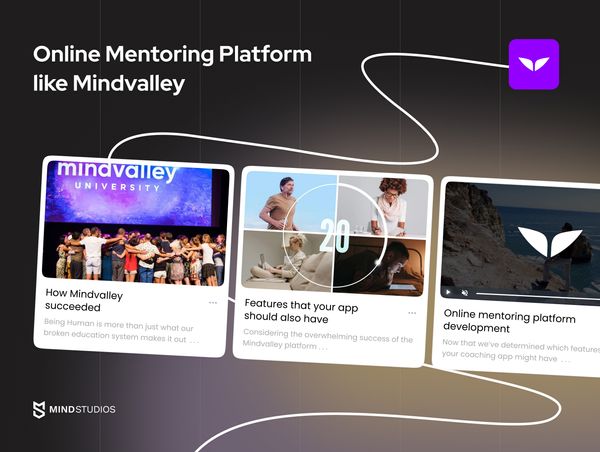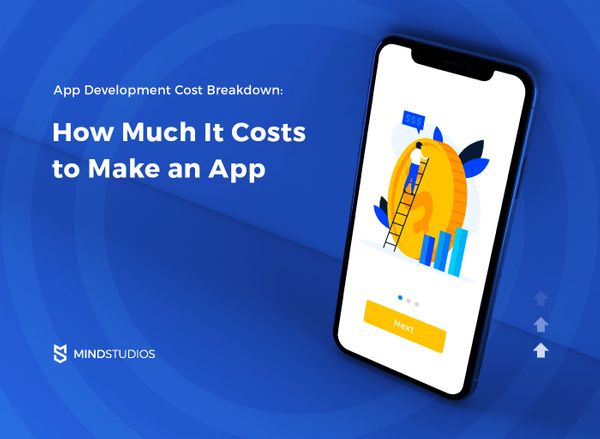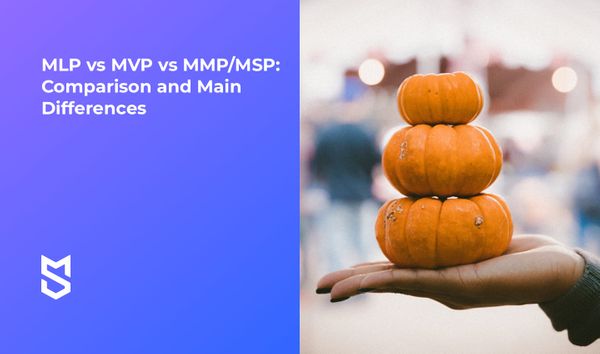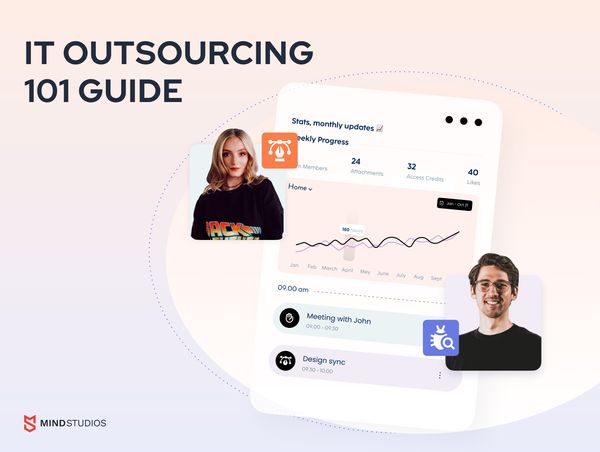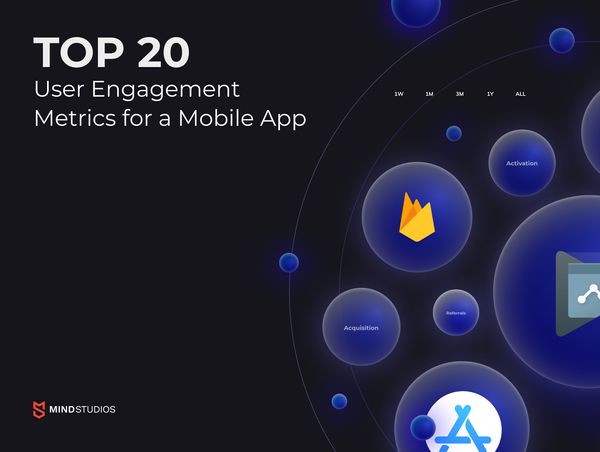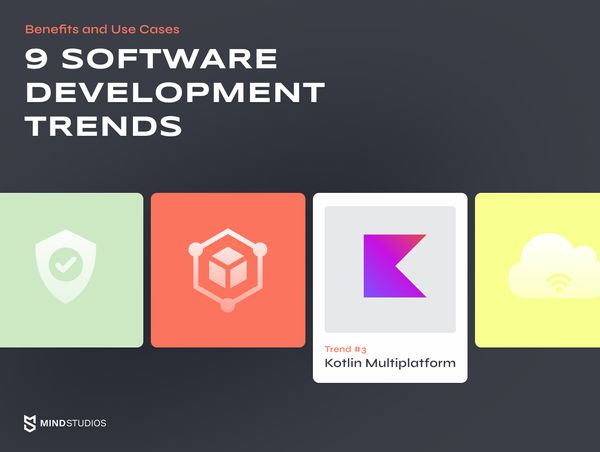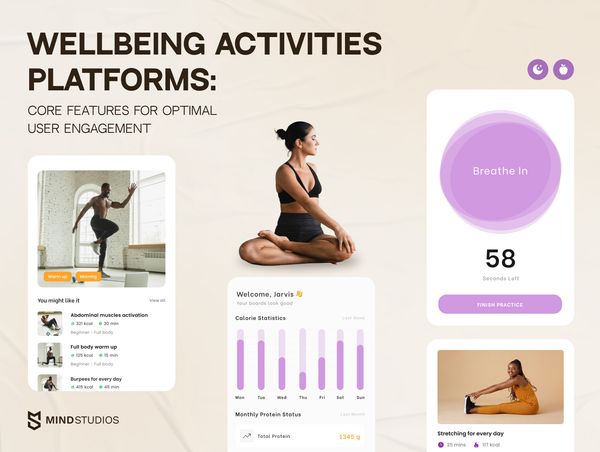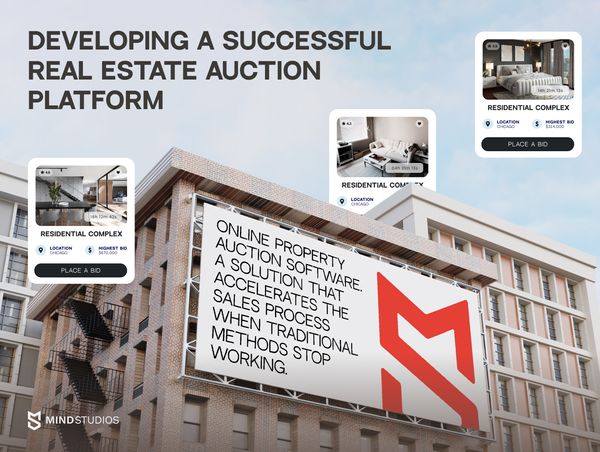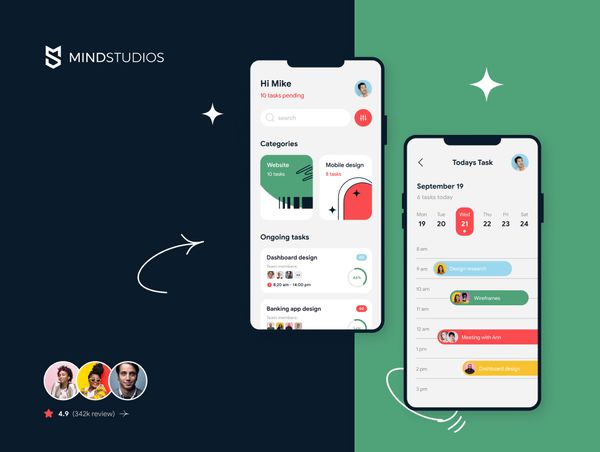
Software as a Service, or SaaS application, is steadily becoming the default model for companies producing all kinds of software.
In this article, we talk in detail about SaaS application development, why these products are so popular, consider their pros and cons, and offer experience-based advice on how to develop SaaS products and make them successful.
What is a SaaS application?
Software as a service is a model of distributing and running software in the cloud.
According to a 2020 global forecast by MarketsandMarkets, the cloud computing market is growing at a 17.5% CAGR and is expected to reach $832 billion by 2025.
Most people and businesses today use at least one SaaS application:
- Cloud storage (Google Drive, Dropbox)
- Video call software (Zoom)
- Collaboration software (Slack, Google Workspace, Office 365)
- Creative software (Adobe CC, Figma, Canva)
The SaaS model isn’t as new as it might seem. In fact, its history goes back as far as 1999 — to the launch of the Salesforce CRM. However, the rapid growth of SaaS and its expansion into enterprise-scale businesses is a much newer development brought about by the fast evolution of the internet and cloud computing.
The last twenty years or so have seen over a hundred unicorn startups in the SaaS category, the best known being Stripe, the credit card processor valued at $95 billion as of March 2021.
Differences between SaaS and Web applications
For non-developers, it might be hard to see the difference between software-as-a-service and regular web apps. While we wouldn’t compare the two directly point by point, it’s a question worth clarifying.
Both SaaS and web applications are accessed over the internet. However, there are also distinctive differences.
SaaS products are always cloud-based by definition, but can be in any form accessible over the internet, be it a web browser or a desktop or mobile app.
On the other hand, web apps are limited to access through a web browser, and aren’t obligated to be cloud-based.
A SaaS product can also be a web application, and vice versa. The example of this would be Netflix, which is fully accessible from a web browser as well as via desktop and mobile apps. If you want to build a cloud-based SaaS application, you can do it as a web app.
However, not every web app is a SaaS, and not every SaaS product is a web app. For instance, Spotify isn’t accessible via a web browser for full functionality, you need to install their app to use the service.
Another point is that SaaS products by default mean pay-per-use model, usually a subscription. Web apps can use a one-time payment model as well as be monetized by ads or be completely free to use.
Finally, there are a set of requirements a product needs to meet to be considered software-as-a-service, besides being cloud-based and pay-per-use. SaaS products:
- are easily scalable;
- support multi-tenancy (more on that in the tech-stack section below);
- have some kind of self-service sign-up feature and a mechanism to identify, monitor, and manage unique users;
- offer “tenants” (users) some kind of customization.
The benefits of building SaaS applications
Developing SaaS applications brings benefits to both end users and software providers.
For end users, using SaaS products means:
- Saving money on buying pricey software for each individual machine. SaaS solutions are mostly subscription-based, with a variety of flexible plans for individuals as well as for businesses of any size.
- Easy software installation and updates. Users download SaaS products from the cloud and may not need to actually install them, instead running them in a browser. In addition, SaaS solutions can be updated automatically in the background, without any downtime.
- Saving time on data sharing. Cloud-based software offers instant access to files by syncing them across devices and accounts. This helps collaboration immensely for team members who have access to the file.
- Easy scaling. Users can upgrade or downgrade their plans at any moment without having to call a technical support specialist to remove or install software.
- Zero to no downtime. In contrast to physical servers, cloud servers are able to automatically call on extra copies of an app to distribute the load if the app receives too many requests.
- Data safety. Cloud servers have higher default levels of security compared to physical servers.
- Maintenance support. Individuals and businesses using SaaS products don’t need their own maintenance teams. If anything happens, the software owner provides maintenance and updates.
For software service providers, the SaaS model has the following pros:
- Secure software code. With cloud distribution, end users have no access to the app’s source code, making it impossible for them to steal the code in whole or in part.
- Continuous revenue. SaaS is a subscription-based model, which makes for steady revenue flows as long as customers use the software.
- Possibility to update and upgrade regularly. Cloud servers are able to make app copies. Thanks to this, with app code in the cloud, it’s possible to update the app without downtime for users: a copy of an app’s current version can continue functioning as you update the main version. When the update is finished, the updated version will go live and the copy of the previous version can be deleted.
Types of SaaS applications
There are two distinct types of SaaS applications: traditional software as a service and white-label software.
In short, the difference between traditional and white-label SaaS software is as follows:
- Traditional SaaS software allows the end user to see who owns the software code.
For example, any business can use Slack for communication, but Slack is the recognized brand. Google owns Google Workspace, Adobe owns its Adobe Creative Cloud software, and Zoom is also a well-known and recognized company.
The software we built for Shanghai nightlife, Unight, is a traditional SaaS solution that helps venues sell tickets and promote events. Unight is currently the #1 ticket selling platform in Shanghai. - White-label SaaS software is sold unbranded. Businesses and individuals that buy it can customize the software and apply their own branding with little to no mention of the code owners and can resell the software’s services under their own brand.
For example, DashClicks, a popular drag-and-drop website builder for digital marketing agencies, is a white-label solution. Websites created with DashClicks have custom domains, making it impossible for end users to know they’re not custom SaaS solutions but rather third-party software.
Website builders, content management systems (CMSs), and hosting solutions are usually white-label SaaS products.
White-label SaaS platforms need to be more customizable than traditional SaaS platforms; therefore, the white-label model is not suitable for all kinds of software.
SaaS tech stack
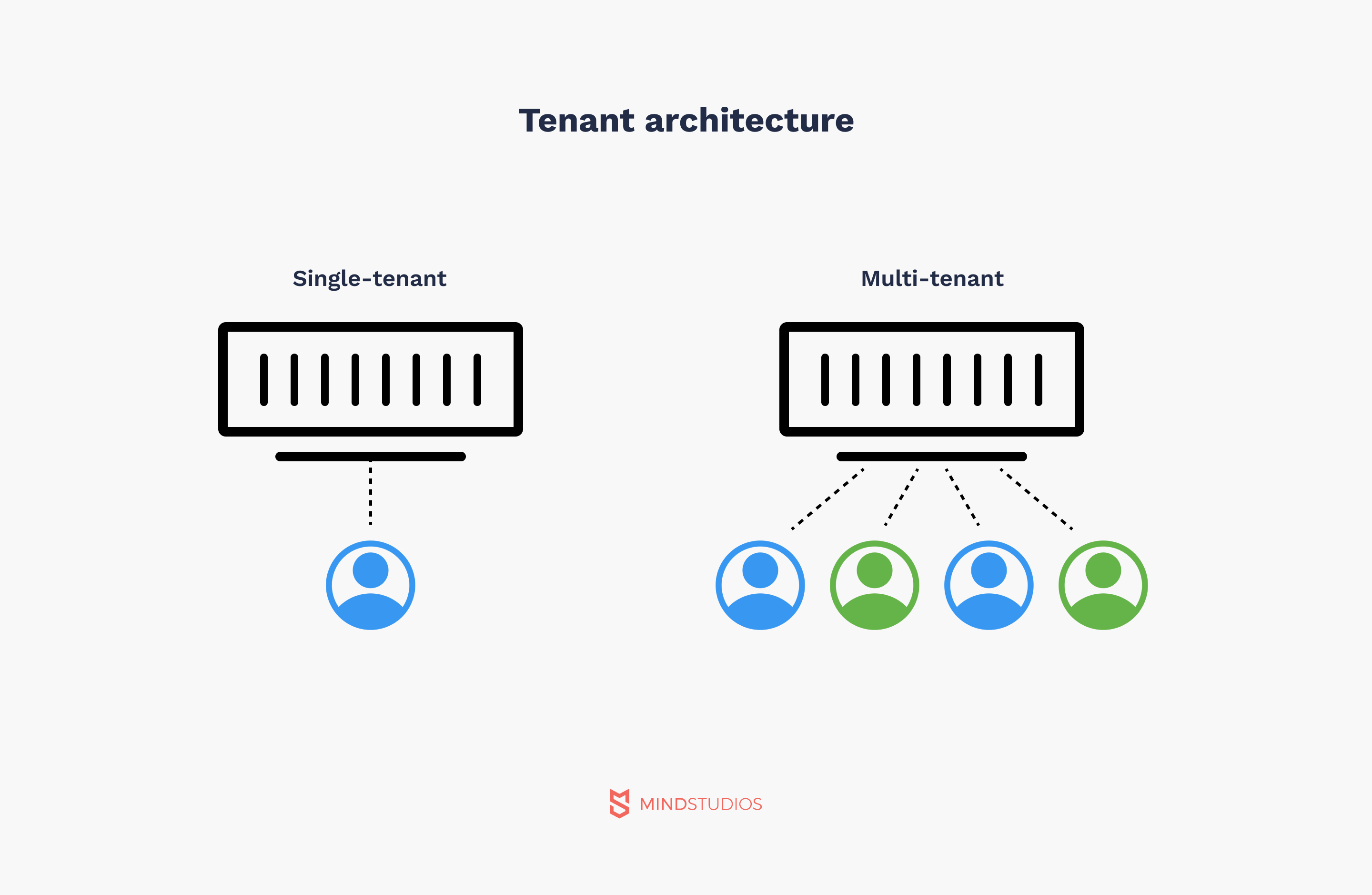
Almost anything can be a SaaS product these days: CMSs, CRMs, creative software, messengers, audio/video calling apps, and more.
However, certain tech solutions will be necessary for most, if not all, SaaS products.
Content delivery network (CDN)
A CDN is a network of servers — preferably cloud-based if you want to develop SaaS applications — located all over the world. CDNs are used to distribute the load on the network and enhance platform performance. With servers located in all areas where your SaaS platform is available, users will have shorter response times, improving the user experience.
Examples of CDNs are Amazon CloudFront, OVH Cloud, and Cloudflare.
Application programming interfaces (APIs)
APIs are used to implement specific functionality into an application without building all SaaS application functionality from scratch. For example, when a website offers you to connect or link your social network profile — Facebook, Twitter, LinkedIn — it is made possible by the API of the social network in question.
There are APIs for all kinds of functionality that you could use in a SaaS web application development: booking flights, booking a table in a restaurant, streaming, chat functionality, payments, analytics, and much more.
Multi-tenant architecture
A multi-tenant architecture, or multitenancy, is an integral part of any SaaS platform development. This architecture enables a single server to run multiple applications and allows multiple users to access a single application. At the same time, each “tenant” — whether an app or a user — remains separate from all others, even if tenants share a database.
А мulti-tenant cloud-based SaaS architecture is what makes SaaS platforms scalable.
Load balancer
Whereas a CDN distributes content across servers to deliver it to users faster, load balancing systems distribute incoming requests/traffic across multiple servers to enhance application performance and split the load on databases.
How to make a cloud-based SaaS application
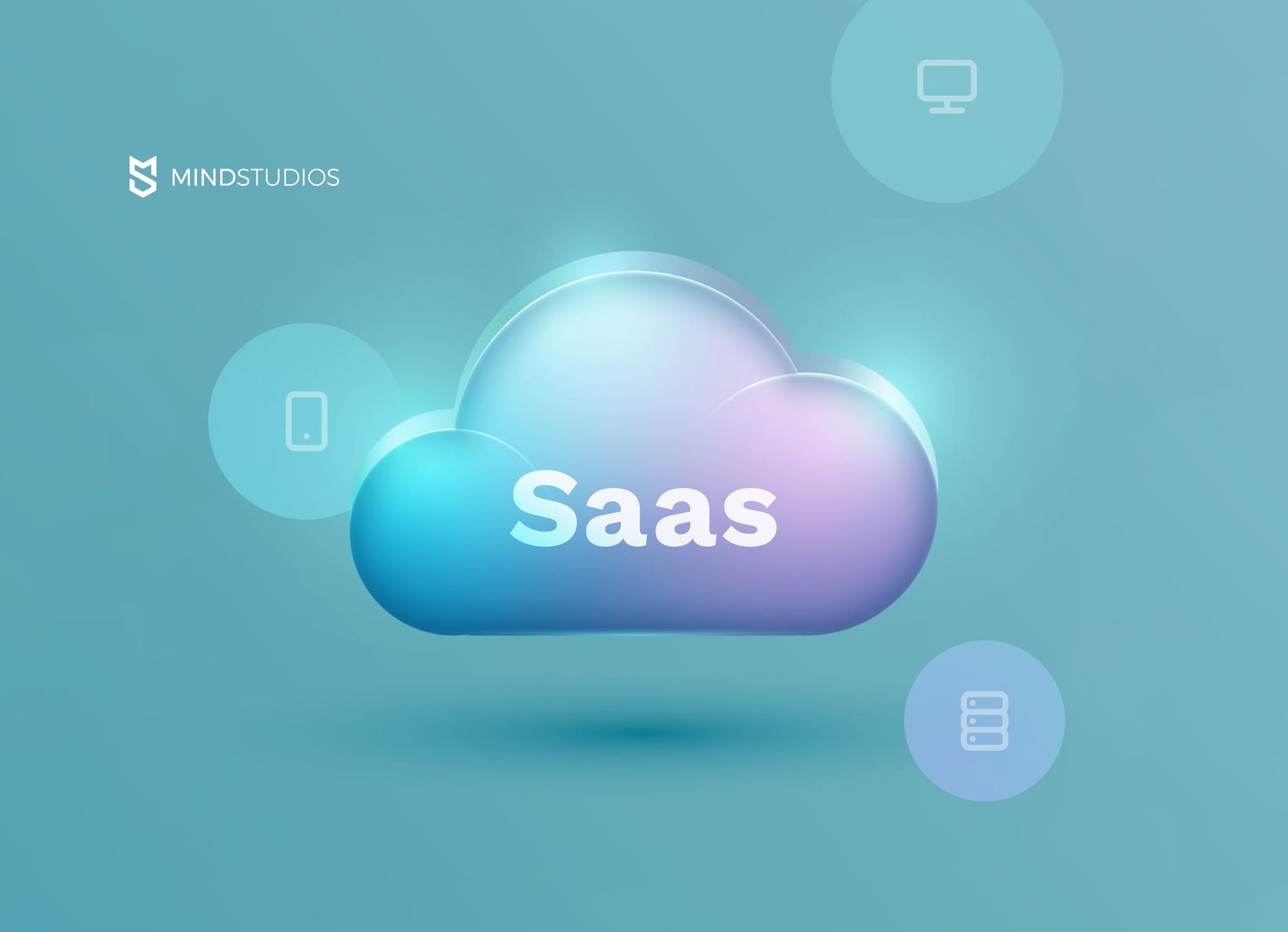
In this section, we’ll show you the ideal SaaS development process as we see it. This process may seem quite complex, but it’s also flexible enough to fit diverse forms of SaaS software.
Step 1. Clarify your idea for yourself
It’s important that you approach SaaS app developers when you yourself know what you need — to some extent, at least. You might want to do some preliminary research and survey your existing customers and/or potential platform users as to what they need.
- What problem do you want to solve with SaaS application development?
- What analogs to your idea are there on the market, and what are they lacking?
- Is SaaS the best model for your product or service?
- Do you want your platform to be a traditional SaaS product or white-label software?
- What requirements do you have for your software?
Experienced software developers will help you polish your idea, will offer you solutions for your desired functionality, and will estimate the SaaS development cost and timeframe. However, the more information you provide at the start of the collaboration, the faster the team will start SaaS application development.
Step 2. Find SaaS developers
Choosing SaaS developers isn’t an issue to be taken lightly. SaaS cloud technology is complex, and SaaS platforms often need to adhere to local and national requirements.
You can choose to hire in-house developers or outsource your product to either a SaaS app development company or freelancers. You’ll also need to consider where you’ll be looking for developers, as software development specialists can be found in all corners of the world. The process of finding specialists might be daunting.
You can read about the process of hiring software development partners in these articles:
- In-house vs Outsourcing: What to Choose for Software Development
- How to Hire Remote Software Developers: An In-Depth Guide [link to be added]
- How to Outsource Software Development in 2021
Step 3. Research and validate your idea
The first thing most good development companies will offer is to conduct thorough market research into your idea. To build a SaaS product with success in mind, developers need a lot of information, and you’ll need to make some decisions at the initial stages.
- Is your idea valid as it is?
- What alternative solutions exist that solve the same problem?
- What do you offer that’s unique to your product or service?
- What is your platform’s target audience, and what do they need from your SaaS product?
- How should you attract users to your platform?
- How should you measure your platform’s performance?
Research results will help you create a business plan for your platform and allow your team to prioritize SaaS app features and create road maps for developing your software as a service product.
Step 4. Make prototypes
To make sure you and your team see your SaaS platform the same way, when the team starts to build a SaaS application, designers will create several prototypes:
- Navigation concepts — the basis for the UX
- Low-fidelity prototypes — the first UI concepts
- High-fidelity prototypes — full-color and sometimes interactive prototypes
Testing a prototype for each stage of design is important to understand how the platform will work and fine-tune it for the best user experience.
Step 5. SaaS MVP Development
A minimum viable product (MVP) is a product with the minimum functionality that you can release to the public. An MVP serves several purposes:
- It helps you better gauge audience interest
- It allows developers to test the product on real users who might leave genuine feedback
- It helps you prioritize features for future development stages
- It creates opportunities for building brand recognition and obtaining your first loyal users
- In certain cases, an MVP allows you to earn some ROI
The scope of MVP development will depend on the kind of SaaS software you’re building. An MVP usually needs basic features plus your unique value proposition, and its design might be rather simple.
An alternative to an MVP is an MLP — a minimum lovable product. An MLP also has basic functionality plus a unique value proposition, but it usually has a more refined UI/UX design aimed at building recognizability and emotional attachment in users.
Step 6. Launch marketing
Marketing is an important stage in the SaaS software development life cycle. You’ll need to run marketing campaigns as long as your SaaS platform is live (which will hopefully be a long time after the full launch), so it’s critical to use the MVP to figure out the best marketing channels, estimate the possible cost of campaigns, and tweak your marketing actions according to actual data.
Often, it makes sense to launch marketing before the release to feel out demand, build brand recognition, and make users anticipate the release.
Another benefit marketing brings is that it allows business owners to calculate future SaaS app development costs and profits and analyze the product’s performance.
Step 7. Analyze performance
To fine-tune your platform, you’ll need to know if it’s performing as expected or if you need to introduce changes — to functionality, to marketing, or to your business plan and strategy.
One of the most helpful tools to analyze MVP and marketing performance is unit economics.
Unit economics = Customer lifetime value / Customer acquisition cost
Unit economics helps you calculate the value each customer — a user, in the case of a software product like a SaaS app — brings to your business. This allows you to determine whether it’s profitable to use a particular marketing strategy to attract users or you’re throwing away your hard-earned money. It can also help you optimize your prices and forecast profits.
Having analyzed performance and gathered feedback, you’ll have the data you need to make better decisions and continue developing your software as a service product.
SaaS application development team structure
SaaS-based application development is a complex task as SaaS products need to adhere to a set of requirements. Therefore, you will need a professional team that will cover all bases.
- Project manager. This person will be in charge of planning, coordinating, and monitoring all stages of the project as well as communicating with you (the client) and possible other stakeholders.
- Business analyst. It’s not a compulsory specialist in all companies or on all projects, but since most SaaS products are quite complex and your business will most likely revolve around this product, a business analyst is usually a necessary and beneficial addition to the team.
- UI/UX designer. To make your SaaS product intuitive and user-friendly, as well as to make it look good and in line with your brand identity (or to come up with one), you’ll need at least one of these.
- Backend developer. That’s who is responsible for the backbone of your SaaS product, its architecture, security, and reliability.
- User-side platform developer. If your SaaS product is web-based, this would be a front-end developer. For mobile products, it will be iOS or Android specialists. For desktop applications, you’ll need developers specializing in your chosen platform (Windows, macOS, Linux, etc.)
- Quality assurance (QA) specialists. To design a SaaS application to be successful, it needs to be tested thoroughly for quality. Even small bugs can erode a product like termites if left unchecked for a long time, so be sure to allocate ample time for testing all sides of the application.
This is the very basic list. If you’re planning to advertise your product widely, a marketing specialist is a must. If your platform will be a host to a lot of technical content like instructions, you might want to invest in a technical writer, who will be able to turn this content into easily readable guidelines. Other optional specialists might also be added, like DevOps.
How much does it cost to develop a SaaS platform?
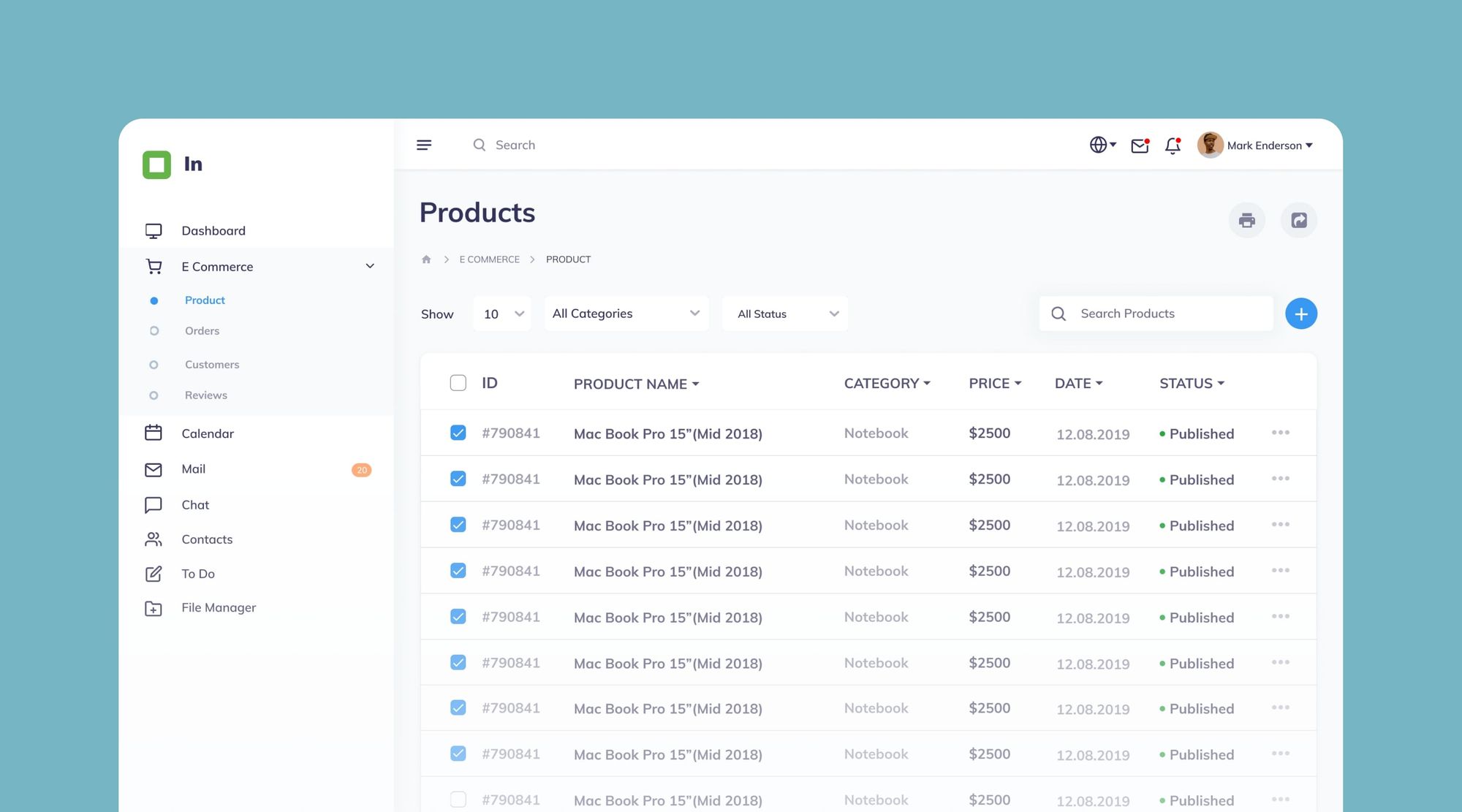
Given that almost any software can be built as a SaaS platform, making precise estimates for a generic SaaS application is nigh impossible. A highly customizable white-label website builder with numerous templates and built-in tools will have a whole different set of features compared to video conference software like Zoom, for example.
The type of SaaS platform you want to create, its feature set, the niche you’re aiming at, the development timeframe, the price tag of your chosen app development team — all of this will impact the price of creating your product.
The cost of developing a SaaS platform consists of multiple parts — a lot of research and design prior to actual development, testing, and marketing.
Based on our experience, the SaaS development cost for a traditional (not white-label) web-based SaaS platform will start at about $65,000 for an MVP and will go up as you add and fine-tune features. If you’re going for a platform in the form of a mobile app, expect to hear numbers around $70,000 and up per platform.
There’s also an option of a satellite mobile app for a web platform — a small app with very limited functionality. Fitr, a platform we developed for remote coaches, is a web-based solution, but it has both iOS and Android satellites created solely for fitness clients to comfortably watch programs from their coaches.
Twilio’s Authy app only provides two-step authentication. An app like that might cost about $15,000 or so depending on its purpose and functionality.
Possible pitfalls in SaaS platform development
Cloud-based platforms are well known (and well liked) for their high levels of security by default as well as for having next to zero downtime. However, it’s not that you can do no wrong with a cloud-based product. Cloud-based platforms have their own landmines.
One of those landmines — the biggest one, we think — is paying for cloud servers. Cloud providers charge for every little thing:
- Incoming and outgoing content requests
- The amount of data that goes in and out
- The number of machines you use
- The time these machines are active
- Cloning your servers
- And more
Therefore, setting up cloud servers is no trifling matter. You need experienced developers who will evaluate what you need and what will cost you money but will bring few or no benefits.
The second issue to pay attention to is compliance with regulations and laws in the locations in which you will launch your software. Granted, cloud servers offer great data security. However, local requirements like Europe’s GDPR or California’s Consumer Privacy Act might require you to implement specific measures. It’s important to not just leave everything to the cloud providers.
A reliable and experienced SaaS development company will help you research the topic and implement necessary functionality so you don’t fall into any traps.
We hope this article helps you answer at least some questions about how to develop a SaaS application for web or mobile. Developing a SaaS product is a lucrative business venture, and it will become more and more popular in the future. The time to start is now.
If you have any additional questions about how to develop a SaaS web app or mobile application, get in touch with us for a free consultation.

